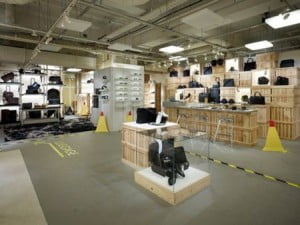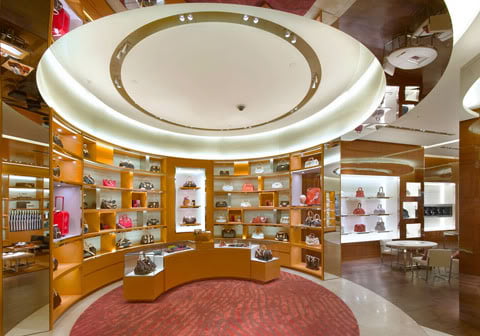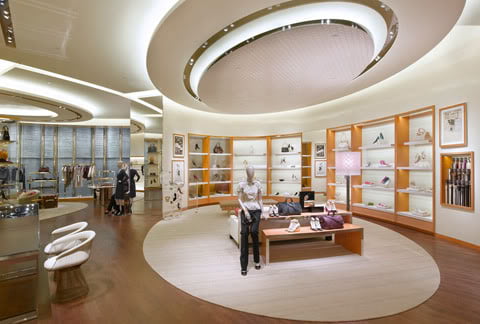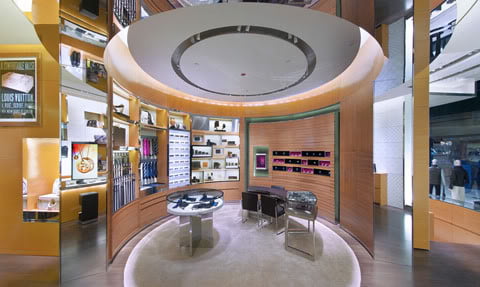When you think about Louis Vuitton you don’t normally thing of particularly innovative store design, but two of their most recent openings have really set a new bar for the brand. In May they opened a store in the Seibu department store in Ikebukuro Japan. It was only a limited opening store, not a permanent one but what was so unique about the shop was its resemblance to a warehouse – fashionably bare and simply – and not really what you’d think of for Louis Vuitton.


More recently they opened a new boutique in Singapore at the Ion Orchard, where they used the “folds of a scarf” as inspiration for the store design. Its a 905 m2 store, which is largest LV store in Southeast Asia.

The facade is apparently one of the largest custom-made façades – comprising two groups of mold-textured glass that mimic a Damier chequerboard pattern effect.

When you step inside the store you are first met with a 9 metre long curve “Bag Bar” for women. Facing a special wall display of small leather goods is a six-meter long curved Bags Bar for Men.

Climb up the marble circular stairway, past the golden walls, and you find Louis Vuitton’s fine leather goods. Following the curved framework from the ground floor, it features high grade, rich, wooden shelves and paneling.

Women’s Ready to Wear & Shoes face the street to allow lighting via natural light coming through the Damier patterned curved glass facade. It also of course makes these products visible from the street and function as defacto shop window displays. The spatial organisation of the area ensures very clear visibility of all product.


Where the Women’s wear area is parquet, white carpet & white leather chairs, the Men’s wear is richer mahogany’s, dark brown leather chairs & brown carpet. The similarity though is the very simplistic & clear spatial design which ensures that when you look at a product you are looking at that product alone. It is not a store for browsing in the typical sense but rather for butterflying attention from one star product to another star product.

 Images via LOUIS VUITTON
Images via LOUIS VUITTON



